Concerned with placing its research and teaching at the very heart of society, the Department of Philosophy proposes several initiatives capable of meeting the expectations of the civic community.
Find out more about the department
Spotlight
News
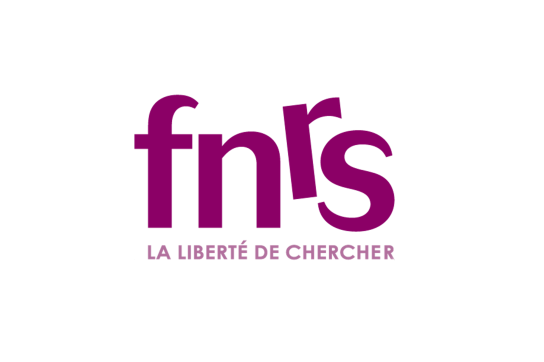
Namur researchers score highly in F.R.S.-FNRS "Grants and mandates" 2025 call for proposals
Namur researchers score highly in F.R.S.-FNRS "Grants and mandates" 2025 call for proposals
On July 1, 2025, the F.R.S.-FNRS published the list of winners of the various doctoral and postdoctoral mandates, Télévie projects and co-financing with the Fonds de recherche du Québec. Among these, many UNamur researchers were awarded funding. UNamur's particularly high ranking rate demonstrates the quality and excellence of research on the Namur campus.
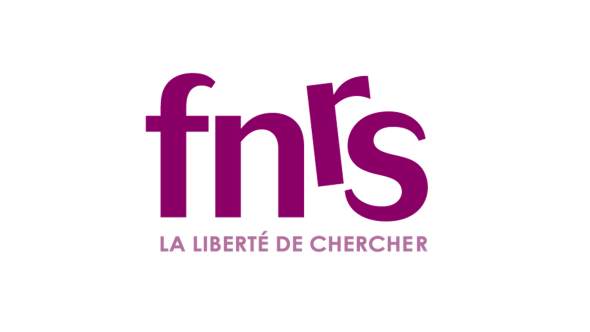
Four researchers obtained a mandat d'aspirant enabling them to start doctoral research:
- Ludovic DUBOIS and Niccolò PARDINI from the Faculty of Philosophy and Letters,
- Jordan ABRAS from the Faculty of Economics Management Communication sciencesPo (EMCP)
- Noah DEVEAUX from the Faculty of Science.
Success is also on the cards for the postdoctoral researchers, nine of whom have been awarded a research fellowship for 3 years.
- Audrey LEPRINCE, Ciska DE RUYVER, Dmytro STRILETS and Cinzia TOMASELLI from the Faculty of Sciences
- Nicolas MICHEL, Sébastien VANDENITTE and Manon HOUTART from the Faculty of Philosophy and Letters
- Pierre-Yves HUREL and Sebastian RONDEROS from the Faculty of Economics Management Communication sciencesPo (EMCP).
In addition, two new qualified researchers join our university.
- Marie DELABY in the Biology Department of the Faculty of Science
- Matthieu PIGNOT in the History Department of the Faculty of Philosophy and Letters
Three Namur researchers have also obtained funding from the Télévie call.
- Marc HENNEQUART for research aimed at highlighting new metabolic biomarkers for better detection of pancreatic cancer
- Carine MICHIELS for research into the resistance of glioblastoma to radiotherapy combined with chemotherapy
- Anne-Catherine HEUSKIN for research into understanding the reprogramming of macrophage immune cells in the formation of the tumor microenvironment.
Frédéric SILVESTRE (Faculty of Science, Department of Biology, URBE) has also been awarded funding for a FNRS-FRQ collaborative project with ULiège and Quebec teams from the Université de Montréal and the Université du Québec à Montréal. The aims of this project are to develop a new method of age determination based on molecular modifications (epigenetic clock) in beluga whales (Delphinapterus leucas) from the St. Lawrence estuary in Quebec, and to understand the role of age on contaminant accumulation as well as on their stress levels and health status. This will enable better decisions to be made to improve the recovery of this endangered population. As part of this project, two doctoral theses (one in Namur and one in Montreal) are open. Candidates must be biologists (or degree deemed equivalent) with an interest in conservation and ecotoxicology issues, and with experience in molecular biology (omics) and bioinformatics.
Congratulations to them!
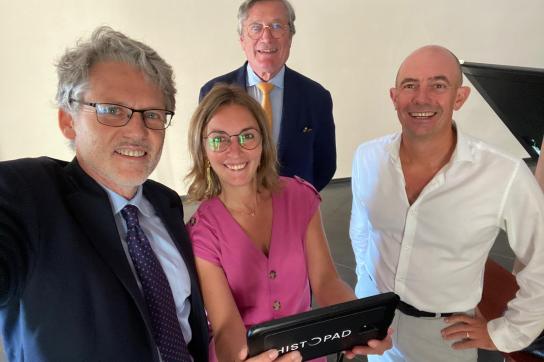
Axel Tixhon, scientific guarantor of a historic augmented reality project
Axel Tixhon, scientific guarantor of a historic augmented reality project
This is a first in Wallonia! The Citadelle de Dinant now offers an augmented reality tour that plunges visitors right into the heart of its history. At the helm: the French company Histovery, specializing in heritage reconstructions, with scientific support from Axel Tixhon, professor in the History Department at UNamur.
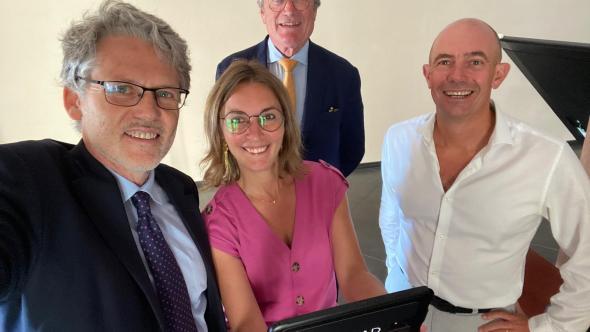
In the photo: Édouard Lecanuet, production assistant at Histovery, Minister Valérie Lescrenier in charge of Tourism and Heritage, Marc de Villenfagne, managing director of the Citadelle of Dinant, and Axel Tixhon, professor in the History Department at UNamur, inaugurate the HistoPad, a 3D reconstruction tool of the history of the Citadelle of Dinant. A project scientifically validated by Axel Tixhon.
Thanks to an interactive tablet christened HistoPad, the public can explore the site like never before. At various points along the route, visitors discover historical scenes recreated in 3D, supported by rigorous documentation and faithful reproductions of period settings, costumes and objects.
Three key periods have been selected for this immersion:
- 1821, Dutch period and construction of the fort
- 1832, Belgian period during which the Citadelle becomes a military prison
- 1914, during the First World War, the site is the scene of confrontations
Historical rigor at the service of innovation
Professor Tixhon was involved in all stages of the project, as a member of the scientific committee. Initially, he highlighted historically interesting events and traces still visible today, such as artillery pieces, an old kitchen or a bakery. It also provided Histovery with relevant and reliable documentation.
A faithful historical reconstruction, down to the smallest detail
His expertise has made it possible to assess the historical accuracy of the reconstructions.
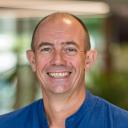
They asked me to validate details, such as the Dutch army uniforms or the handling of weapons," he explains. "We also had to avoid anachronisms. For example, the Histovery team had displayed an 1850 portrait of King Leopold I in the office of a fort commander in 1832. They had also displayed the current coats of arms of the 9 Belgian provinces, which didn't match the coats of arms of the time. So we had to find the right portrait and the right coats of arms.
The invisible recomposed through archives
Some locations have also been virtually recreated from ancient iconographic sources, such as an ingenious wooden mechanism that once carried water from the Meuse to the fortress.
Histovery, already known for its achievements at the Château de Chambord, the Palais de papes in Avignon and Fort Alamo in the USA, here signs a Walloon first, blending heritage, innovation and scientific rigor. A success that demonstrates, once again, the relevance of dialogue between experts at the University of Namur and socio-economic and cultural players.
.The Patrimoines, transmissions, héritages (PaTHs) institute
The Patrimoines, Transmissions, Héritages (PaTHs) institute is a federation of research centers and groups that have sprung up in and around the Faculty of Philosophy and Letters. The institute is made up of several research clusters. Axel Tixhon is a member of the HISI cluster (History, Sounds, Images).

UNamur History Department
As a discipline, history surveys the human past in all its complexity: populations, economies, techniques, politics, religions, arts, ideologies, etc.
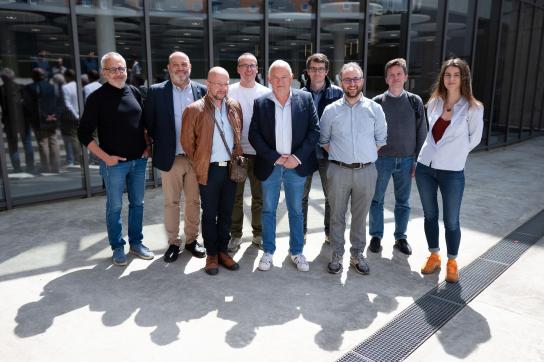
The Department of Physics welcomes a delegation from CERN
The Department of Physics welcomes a delegation from CERN
In May 2025, the Department of Physics welcomed two special visitors: Serge Mathot and François Briard from Namur, both alumni of UNamur and members of CERN. Several activities were on the program, ranging from a visit to the particle accelerator, to science popularization and thematic seminars, particularly in heritage sciences. The aim? To identify areas or activities in which UNamur and CERN could strengthen their collaboration.
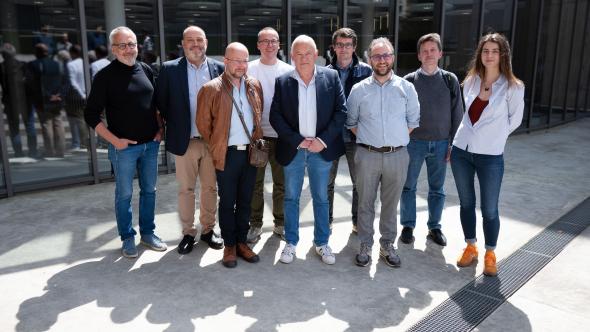
In the picture, from left to right: (top) Pierre Louette, Director of the Physics Department; François Briard, Head of the Science Portal Group (CERN); Julien Colaux, IBA specialist, physics researcher; Boris Hespeels, biology researcher; Alexandre Mayer, physics researcher; Anne-Catherine Heuskin, physics and biophysics researcher. (bottom) André Füzfa, astrophysicist and mathematics researcher; Serge Mathot, Applied Physicist (CERN) and Michaël Lobet, physics researcher.
The love affair between CERN and UNamur goes back a long way. CERN's accelerator complex and experimental program are very different and much larger than those of UNamur's Physics Department, but the fields in which the two institutions work have much in common.
In addition, both guests have a personal history with UNamur. The Physics Department was pleased to welcome Serge Mathot, Referent Applied Physicist (CERN) and alumni of the UNamur Physics Department (1992), as well as François Briard, Group Leader Science Portal (CERN), and alumni of the UNamur Faculty of Computer Science (1994).
The activities began with a meeting between the guests, Rector Annick Castiaux, Vice-Rector for Research Carine Michiels, Physics Department Director Pierre Louette and several other members of the Physics and Biology Department. After a general presentation of the University, the participants pointed out the missions shared by both institutions: research and the transfer of technology and knowledge, service to society, scientific popularization and education and training.
.
Focus on meetings
Physics lunch - CERN presentation
The physics lunch is the monthly meeting between students and members of the physics department and a professional, alumni or not, coming to explain his or her background and what he or she does on a daily basis as a physicist.
During this meeting, attended by around 80 people, François Briard and Serge Mathot presented CERN, the world's largest laboratory for particle physics. CERN's mission is to understand the most elementary particles and the laws of our universe.
At the end of the seminar, the students came away with stars in their eyes. Indeed, opportunities for internships or even first jobs at CERN are possible for physicists but also in many other fields.
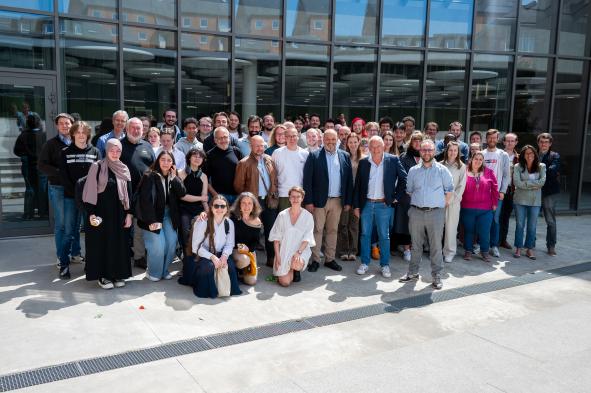
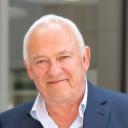
Your physics training at UNamur is your best ticket to a job at CERN. It's more than just a degree in particle physics!
Some internship programs at CERN are particularly well suited to the needs of young Belgian students.
The vast majority of physicists working with CERN (over 13,000) are in fact sent to CERN for varying periods of time by their employing national research institutes. CERN offers an exceptional opportunity to develop international experience under excellent conditions, in an environment that is unique in the world! What an inspiration for our young students!
Visit of the ALTAÏS and SIAM facilities
Capable of generating ion beams consisting of any stable element with energies of up to 16 Mega electron-Volt (MeV), the ALTAÏS particle accelerator is used in various fields of fundamental and applied research, notably through industrial partnerships. CERN's largest current linear accelerator can produce particle beams of up to 160 MeV.
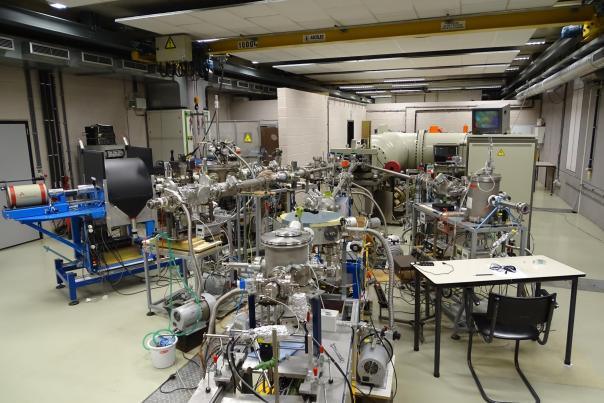
Meeting with members of the ARC PHOENIX project, complemented by a heritage science seminar given by Serge Mathot.
The projet d'Action Recherche Concertée (ARC) PHOENIX aims to renew our understanding of medieval parchments and ancient coins. Artificial intelligence will be exploited to analyze the data generated by material characterization.
This joint study between the Department of Physics and the Namur Institute of Structured Matter (NISM) and the Department of History and the Institut Patrimoines, Transmissions, Héritages (PaTHs) will address questions relating to the production chain and use of these objects and materials in past societies.
At the same time, Serge Mathot presented a seminar in heritage science attended by some 50 people. In particular, he presented his research and the brand-new ELISA accelerator: a miniaturized gas pedal capable of delivering a 2 MeV proton beam used to perform real measurements at the Science Portal.
Meeting on science popularization
Having the opportunity to exchange views with François Briard, Group Leader of the CERN Science Portal is a rare opportunity. Comparing outreach activities has opened up new avenues, discovering and sharing approaches, assessing what works and what doesn't, depending on the target audience. A highly satisfying enrichment for the members present from Confluent des Savoirs (CDS), the University of Namur's research outreach and dissemination service.
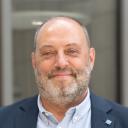
The CERN Science Portal is a place where you can explore CERN and science through authentic and innovative experiences: immersive multimedia exhibitions, hands-on lab workshops, science shows, events combining science and culture, prototyping workshops on the theme of innovation, tours of CERN sites, all accompanied by CERN staff.
BD Physix - Energy
Teachers André Füzfa and Michaël Lobet were able to present the comic strip project created with author Jean-Marc Dubois.
The theme? Energy!
What could be more natural than to talk about it with François Briard, chief popularizer at CERN, who is interested in this popularization project in a medium accessible to people aged 7 to 77!
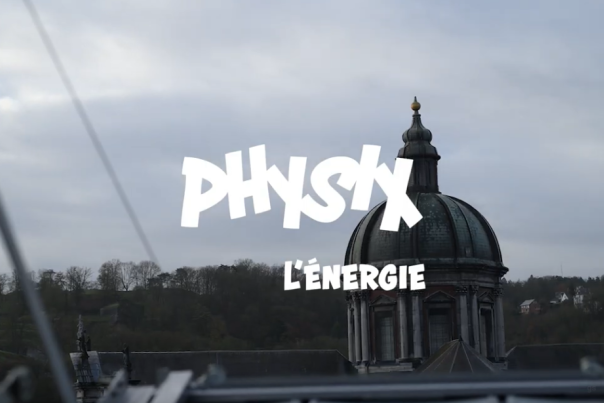
Meeting on the theme of biophysics
Professor Anne-Catherine Heuskin and Dr. Boris Hespeels are currently working on the BEBLOB project, a Belspo project with ESA support, as part of the UNIVERSEH (European Space University for Earth and Humanity) alliance. They are particularly interested in its astonishing ability to withstand high doses of radiation.
Anne-Catherine Heuskin also works in radiobiology. Particles are used to irradiate cancerous cells in order to destroy their genetic material and prevent them from proliferating: this is the basis of radiotherapy and proton therapy.
Meeting with FaSEF regarding teacher training opportunities.
The meeting confirmed the willingness of FaSEF and UNamur to get involved in coordinating the Belgian National Teacher Programme in French-speaking Belgium, which CERN intends to relaunch in 2026. Consideration was also given to other avenues for teacher training, such as CERN's forthcoming involvement in the "Salle des Pros", the training venue for the various players involved in teacher training at UNamur.
.A visit to TRAKK
The TRAKK is Namur's creative hub supported by 3 complementary partners in the field: BEP, KIKK, and UNamur. In addition to the venue, François Briard was able to visit the ProtoLab , which bridges the gap between ideas and industry by being a decentralized research and development hub accessible to SMEs and project leaders by offering advanced support in prototyping products or services.
Guests at CERN
François Briard - CERN Science Portal Group Leader, UNamur alumni 1994
Specialities:
- Information systems, administrative applications and databases (Oracle)
- Communications for the general public
- Visitor reception logistics
- Event organization for up to 80,000 participants.
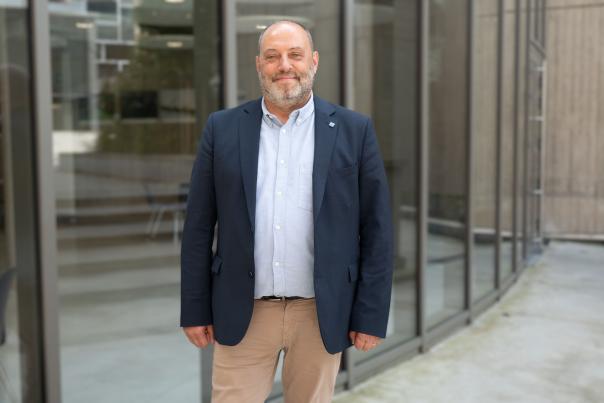
Graduating in law and information technology management (DGTIC) in 1994 after his bachelor's and master's degrees in computer science in 1993, François Briard works at CERN, the European Organization for Nuclear Research in Geneva, the world's largest particle physics laboratory.
During his school career, which was 100% at UNamur, he was vice-president of the Régionale namuroise and student delegate during his years as a candidate in economic and social sciences, computer science option.
Thanks to the multidisciplinary training provided at UNamur, he was able to seize several opportunities to redirect his career at CERN, where he was an information systems engineer from 1994 and then, from 2014, redirected his career until he became Group Leader of the Science Portal, which is CERN's general public communications center.
Serge Mathot - Referent Applied Physicist at CERN, UNamur alumni 1992
His specialties
- Ion Beam Analysis (IBA)
- Metallurgy, vacuum brazing
- Radio-Frequency Quadrupole (RFQ) linacs, ion sources

Serge Mathot obtained his doctorate in applied sciences from UNamur in 1992, following his bachelor's degree in physical sciences in 1985.
He then carried out a post-doctorate at the Joint Research Center (EU science hub) in Geel, which aims to bring together multidisciplinary skills to develop new measurement methods and tools such as reference materials.
He perfected his expertise in physical metallurgy before joining CERN in 1995 as a Referent Applied Physicist. He has worked on numerous research projects (CLOUD, MACHINA, ELISA...) and developed numerous parts for the manufacture of CERN's gas pedals.
It's a great pleasure to meet him.CERN
CERN, the European Organization for Nuclear Research, is one of the world's largest and most prestigious scientific laboratories. Its vocation is fundamental physics, the discovery of the constituents and laws of the Universe. It uses highly complex scientific instruments to probe the ultimate constituents of matter: the fundamental particles. By studying what happens when these particles collide, physicists understand the laws of Nature.
The instruments used at CERN are particle gas pedals and detectors. Gas pedals carry beams of particles at high energies to collide with other beams or fixed targets. Detectors observe and record the results of these collisions.
Founded in 1954, CERN is located on either side of the French-Swiss border, near Geneva. It was one of the first organizations on a European scale and today has 25 member states, including Belgium.
Physics programs at UNamur
From the infinitely small to the infinitely large, from elementary particles to galaxies, are you thirsty to understand the whys and wherefores of the natural phenomena you observe? Physics answers all your questions.

A first in Belgium: UNamur researcher reveals forgotten history of Walloon wolves thanks to ancient DNA
A first in Belgium: UNamur researcher reveals forgotten history of Walloon wolves thanks to ancient DNA
From 2020 to 2025, as part of her doctoral thesis in history, researcher Julie Duchêne conducted a ground-breaking investigation blending history and biology to trace the cohabitation between humans and wolves in Wallonia and Luxembourg, from the 18th to the early 20th century. Thanks to an innovative interdisciplinary approach, including DNA analysis of naturalized 19th-century specimens, her work sheds light on the mechanisms that led to the local extinction of the species. This research was made possible thanks to the support of numerous scientific and cultural partners.
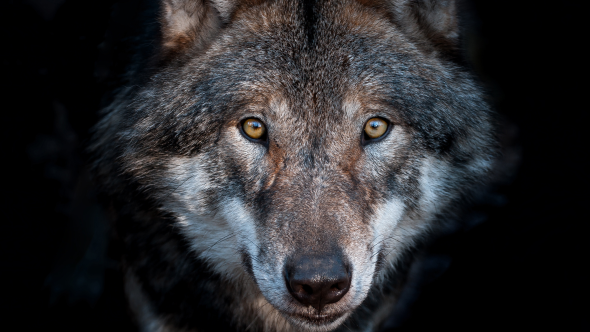
In her doctoral thesis, Julie Duchêne (PhD in History UNamur/FNRS-FRESH) has brought out of the shadows the unexplored history of the relationship between humans and wolves in the Walloon and Luxembourg territories during the pivotal period that saw the extinction of the species there (18th-early 20th century).
What's at stake in this research?
- To understand the complexity of this coexistence in our regions,
- To identify the influence of human activities on the lives of wolves and of wolves on human activities,
- To decipher the mechanisms that led to the extinction of Canis lupus.
To achieve this, the researcher has deployed a pioneering multidisciplinary methodology in Belgium, combining on the one hand historical and documentary analyses, and on the other morphological and DNA analyses of naturalized 19th-century wolves preserved within a dozen partner institutions, museums and venues in Wallonia. Thanks to collaboration between the E-BIOM laboratory and the University of Namur, 13 specimens were thus studied according to a rigorous protocol, respectful of the integrity of the historical pieces.
While ancient DNA is often degraded by time, conservation conditions or the products used during naturalization, 9 out of 13 samples yielded results.
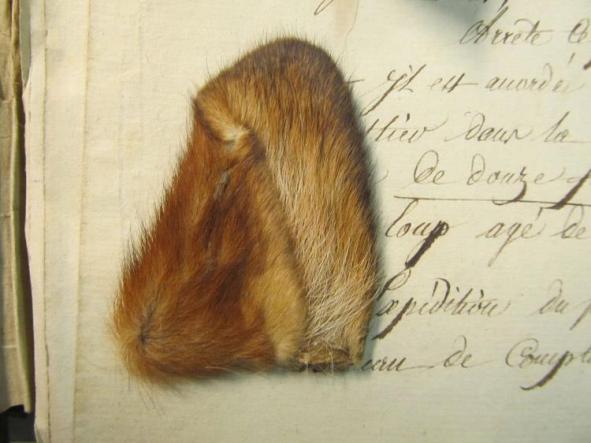
The main results of this analysis :
- Species confirmed : All the specimens analyzed belong to the species Canis lupus lupus, ruling out the hypothesis of dogs or hybrids.
- Kinship identified : Two wolves, including one kept by the de Bonhome family in Mozet, present a proven kinship.
- Dominant haplotypes: The majority of wolves belong to haplotypes H4 and H8, from a metapopulation historically present from western France to Germany.
- Discovery of an extinct haplotype: The Habay wolf, preserved by the de Beaulieu family, has a unique genetic profile, probably from a now-extinct population.
- Higher past genetic diversity: Wolves from the 18th and 19th centuries show greater genetic diversity than current populations.
- Wallonia, a historical crossroads: Even then, the region was at the crossroads of two major lupine dispersal routes: one from France, the other from Germany.
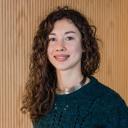
These discoveries underline the past genetic richness of wolves in Europe and the strategic position of Wallonia, already a crossroads for dispersal in the 19th century. A situation that echoes the territory's current recolonization by German-Polish and Italian-Alpine lineages
This study highlights the importance of heritage collections for better understanding the evolutionary history of species and contemporary conservation issues.
Want to find out more?
Discover all the results of this study and the "Loup qui es-tu?" project.
Brochure explaining the "Loup, qui es-tu?" project
To find out more ...
Deconstructing preconceived ideas about the wolf for a better-informed debate
The historical and scientific analysis carried out by Julie Duchêne also helps to qualify certain preconceived ideas about the wolf, often relayed in current debates.
- Attacks on human beings have existed, but they remain marginal and to be put into perspective. Complaints mainly concerned the loss of livestock (sheep, cows, horses, etc.).
- The wolf doesn't just live in the forest. Historically, it also frequented fields, roads, ponds and moors. Its presence depends on many factors, not a single habitat.
- The confrontations are not one-sided. They are also the result of human expansion into natural environments, not just wolf incursions.
- Populations did not seek to exterminate the species. They aimed for regulation, integrating lupine nuisances as well as other natural hazards.
- The wolf plays a positive ecological role, regulating populations of large herbivores, which promotes forest regeneration.
- The wolf's extinction is not due solely to eradication policies. It is the result of a combination of factors, including increasing human pressure on natural environments.
A study that extends into an exhibition
Julie Duchêne's research was also used to set up the exhibition "Même pas peur! Une évolution de l'image du loup à travers les siècles", developed by third-year history bachelor students as part of the Cultural Project course. The exhibition makes stops at :
- From May to early June 2025: Floreffe Seminary
- From June to September 2025: Pairi Daiza
- From October 2025 to May 2026: Gaumais Museum
About Julie Duchêne
Julie Duchêne holds a PhD in History from UNamur, specializing in environmental history and applied history (Public History). A FNRS-FRESH scholarship holder, she defended her doctoral thesis entitled "Les loups, de nuisibles à invisibles. Le rôle des politiques de lutte dans la disparition des loups des territoires wallon et luxembourgeois (18e-20e siècles), conducted under the supervision of Professor Isabelle Parmentier (director of the Pôle de l'histoire environnementale, institut ILEE).

Namur researchers score highly in F.R.S.-FNRS "Grants and mandates" 2025 call for proposals
Namur researchers score highly in F.R.S.-FNRS "Grants and mandates" 2025 call for proposals
On July 1, 2025, the F.R.S.-FNRS published the list of winners of the various doctoral and postdoctoral mandates, Télévie projects and co-financing with the Fonds de recherche du Québec. Among these, many UNamur researchers were awarded funding. UNamur's particularly high ranking rate demonstrates the quality and excellence of research on the Namur campus.

Four researchers obtained a mandat d'aspirant enabling them to start doctoral research:
- Ludovic DUBOIS and Niccolò PARDINI from the Faculty of Philosophy and Letters,
- Jordan ABRAS from the Faculty of Economics Management Communication sciencesPo (EMCP)
- Noah DEVEAUX from the Faculty of Science.
Success is also on the cards for the postdoctoral researchers, nine of whom have been awarded a research fellowship for 3 years.
- Audrey LEPRINCE, Ciska DE RUYVER, Dmytro STRILETS and Cinzia TOMASELLI from the Faculty of Sciences
- Nicolas MICHEL, Sébastien VANDENITTE and Manon HOUTART from the Faculty of Philosophy and Letters
- Pierre-Yves HUREL and Sebastian RONDEROS from the Faculty of Economics Management Communication sciencesPo (EMCP).
In addition, two new qualified researchers join our university.
- Marie DELABY in the Biology Department of the Faculty of Science
- Matthieu PIGNOT in the History Department of the Faculty of Philosophy and Letters
Three Namur researchers have also obtained funding from the Télévie call.
- Marc HENNEQUART for research aimed at highlighting new metabolic biomarkers for better detection of pancreatic cancer
- Carine MICHIELS for research into the resistance of glioblastoma to radiotherapy combined with chemotherapy
- Anne-Catherine HEUSKIN for research into understanding the reprogramming of macrophage immune cells in the formation of the tumor microenvironment.
Frédéric SILVESTRE (Faculty of Science, Department of Biology, URBE) has also been awarded funding for a FNRS-FRQ collaborative project with ULiège and Quebec teams from the Université de Montréal and the Université du Québec à Montréal. The aims of this project are to develop a new method of age determination based on molecular modifications (epigenetic clock) in beluga whales (Delphinapterus leucas) from the St. Lawrence estuary in Quebec, and to understand the role of age on contaminant accumulation as well as on their stress levels and health status. This will enable better decisions to be made to improve the recovery of this endangered population. As part of this project, two doctoral theses (one in Namur and one in Montreal) are open. Candidates must be biologists (or degree deemed equivalent) with an interest in conservation and ecotoxicology issues, and with experience in molecular biology (omics) and bioinformatics.
Congratulations to them!

Axel Tixhon, scientific guarantor of a historic augmented reality project
Axel Tixhon, scientific guarantor of a historic augmented reality project
This is a first in Wallonia! The Citadelle de Dinant now offers an augmented reality tour that plunges visitors right into the heart of its history. At the helm: the French company Histovery, specializing in heritage reconstructions, with scientific support from Axel Tixhon, professor in the History Department at UNamur.

In the photo: Édouard Lecanuet, production assistant at Histovery, Minister Valérie Lescrenier in charge of Tourism and Heritage, Marc de Villenfagne, managing director of the Citadelle of Dinant, and Axel Tixhon, professor in the History Department at UNamur, inaugurate the HistoPad, a 3D reconstruction tool of the history of the Citadelle of Dinant. A project scientifically validated by Axel Tixhon.
Thanks to an interactive tablet christened HistoPad, the public can explore the site like never before. At various points along the route, visitors discover historical scenes recreated in 3D, supported by rigorous documentation and faithful reproductions of period settings, costumes and objects.
Three key periods have been selected for this immersion:
- 1821, Dutch period and construction of the fort
- 1832, Belgian period during which the Citadelle becomes a military prison
- 1914, during the First World War, the site is the scene of confrontations
Historical rigor at the service of innovation
Professor Tixhon was involved in all stages of the project, as a member of the scientific committee. Initially, he highlighted historically interesting events and traces still visible today, such as artillery pieces, an old kitchen or a bakery. It also provided Histovery with relevant and reliable documentation.
A faithful historical reconstruction, down to the smallest detail
His expertise has made it possible to assess the historical accuracy of the reconstructions.

They asked me to validate details, such as the Dutch army uniforms or the handling of weapons," he explains. "We also had to avoid anachronisms. For example, the Histovery team had displayed an 1850 portrait of King Leopold I in the office of a fort commander in 1832. They had also displayed the current coats of arms of the 9 Belgian provinces, which didn't match the coats of arms of the time. So we had to find the right portrait and the right coats of arms.
The invisible recomposed through archives
Some locations have also been virtually recreated from ancient iconographic sources, such as an ingenious wooden mechanism that once carried water from the Meuse to the fortress.
Histovery, already known for its achievements at the Château de Chambord, the Palais de papes in Avignon and Fort Alamo in the USA, here signs a Walloon first, blending heritage, innovation and scientific rigor. A success that demonstrates, once again, the relevance of dialogue between experts at the University of Namur and socio-economic and cultural players.
.The Patrimoines, transmissions, héritages (PaTHs) institute
The Patrimoines, Transmissions, Héritages (PaTHs) institute is a federation of research centers and groups that have sprung up in and around the Faculty of Philosophy and Letters. The institute is made up of several research clusters. Axel Tixhon is a member of the HISI cluster (History, Sounds, Images).

UNamur History Department
As a discipline, history surveys the human past in all its complexity: populations, economies, techniques, politics, religions, arts, ideologies, etc.

The Department of Physics welcomes a delegation from CERN
The Department of Physics welcomes a delegation from CERN
In May 2025, the Department of Physics welcomed two special visitors: Serge Mathot and François Briard from Namur, both alumni of UNamur and members of CERN. Several activities were on the program, ranging from a visit to the particle accelerator, to science popularization and thematic seminars, particularly in heritage sciences. The aim? To identify areas or activities in which UNamur and CERN could strengthen their collaboration.

In the picture, from left to right: (top) Pierre Louette, Director of the Physics Department; François Briard, Head of the Science Portal Group (CERN); Julien Colaux, IBA specialist, physics researcher; Boris Hespeels, biology researcher; Alexandre Mayer, physics researcher; Anne-Catherine Heuskin, physics and biophysics researcher. (bottom) André Füzfa, astrophysicist and mathematics researcher; Serge Mathot, Applied Physicist (CERN) and Michaël Lobet, physics researcher.
The love affair between CERN and UNamur goes back a long way. CERN's accelerator complex and experimental program are very different and much larger than those of UNamur's Physics Department, but the fields in which the two institutions work have much in common.
In addition, both guests have a personal history with UNamur. The Physics Department was pleased to welcome Serge Mathot, Referent Applied Physicist (CERN) and alumni of the UNamur Physics Department (1992), as well as François Briard, Group Leader Science Portal (CERN), and alumni of the UNamur Faculty of Computer Science (1994).
The activities began with a meeting between the guests, Rector Annick Castiaux, Vice-Rector for Research Carine Michiels, Physics Department Director Pierre Louette and several other members of the Physics and Biology Department. After a general presentation of the University, the participants pointed out the missions shared by both institutions: research and the transfer of technology and knowledge, service to society, scientific popularization and education and training.
.
Focus on meetings
Physics lunch - CERN presentation
The physics lunch is the monthly meeting between students and members of the physics department and a professional, alumni or not, coming to explain his or her background and what he or she does on a daily basis as a physicist.
During this meeting, attended by around 80 people, François Briard and Serge Mathot presented CERN, the world's largest laboratory for particle physics. CERN's mission is to understand the most elementary particles and the laws of our universe.
At the end of the seminar, the students came away with stars in their eyes. Indeed, opportunities for internships or even first jobs at CERN are possible for physicists but also in many other fields.


Your physics training at UNamur is your best ticket to a job at CERN. It's more than just a degree in particle physics!
Some internship programs at CERN are particularly well suited to the needs of young Belgian students.
The vast majority of physicists working with CERN (over 13,000) are in fact sent to CERN for varying periods of time by their employing national research institutes. CERN offers an exceptional opportunity to develop international experience under excellent conditions, in an environment that is unique in the world! What an inspiration for our young students!
Visit of the ALTAÏS and SIAM facilities
Capable of generating ion beams consisting of any stable element with energies of up to 16 Mega electron-Volt (MeV), the ALTAÏS particle accelerator is used in various fields of fundamental and applied research, notably through industrial partnerships. CERN's largest current linear accelerator can produce particle beams of up to 160 MeV.

Meeting with members of the ARC PHOENIX project, complemented by a heritage science seminar given by Serge Mathot.
The projet d'Action Recherche Concertée (ARC) PHOENIX aims to renew our understanding of medieval parchments and ancient coins. Artificial intelligence will be exploited to analyze the data generated by material characterization.
This joint study between the Department of Physics and the Namur Institute of Structured Matter (NISM) and the Department of History and the Institut Patrimoines, Transmissions, Héritages (PaTHs) will address questions relating to the production chain and use of these objects and materials in past societies.
At the same time, Serge Mathot presented a seminar in heritage science attended by some 50 people. In particular, he presented his research and the brand-new ELISA accelerator: a miniaturized gas pedal capable of delivering a 2 MeV proton beam used to perform real measurements at the Science Portal.
Meeting on science popularization
Having the opportunity to exchange views with François Briard, Group Leader of the CERN Science Portal is a rare opportunity. Comparing outreach activities has opened up new avenues, discovering and sharing approaches, assessing what works and what doesn't, depending on the target audience. A highly satisfying enrichment for the members present from Confluent des Savoirs (CDS), the University of Namur's research outreach and dissemination service.

The CERN Science Portal is a place where you can explore CERN and science through authentic and innovative experiences: immersive multimedia exhibitions, hands-on lab workshops, science shows, events combining science and culture, prototyping workshops on the theme of innovation, tours of CERN sites, all accompanied by CERN staff.
BD Physix - Energy
Teachers André Füzfa and Michaël Lobet were able to present the comic strip project created with author Jean-Marc Dubois.
The theme? Energy!
What could be more natural than to talk about it with François Briard, chief popularizer at CERN, who is interested in this popularization project in a medium accessible to people aged 7 to 77!

Meeting on the theme of biophysics
Professor Anne-Catherine Heuskin and Dr. Boris Hespeels are currently working on the BEBLOB project, a Belspo project with ESA support, as part of the UNIVERSEH (European Space University for Earth and Humanity) alliance. They are particularly interested in its astonishing ability to withstand high doses of radiation.
Anne-Catherine Heuskin also works in radiobiology. Particles are used to irradiate cancerous cells in order to destroy their genetic material and prevent them from proliferating: this is the basis of radiotherapy and proton therapy.
Meeting with FaSEF regarding teacher training opportunities.
The meeting confirmed the willingness of FaSEF and UNamur to get involved in coordinating the Belgian National Teacher Programme in French-speaking Belgium, which CERN intends to relaunch in 2026. Consideration was also given to other avenues for teacher training, such as CERN's forthcoming involvement in the "Salle des Pros", the training venue for the various players involved in teacher training at UNamur.
.A visit to TRAKK
The TRAKK is Namur's creative hub supported by 3 complementary partners in the field: BEP, KIKK, and UNamur. In addition to the venue, François Briard was able to visit the ProtoLab , which bridges the gap between ideas and industry by being a decentralized research and development hub accessible to SMEs and project leaders by offering advanced support in prototyping products or services.
Guests at CERN
François Briard - CERN Science Portal Group Leader, UNamur alumni 1994
Specialities:
- Information systems, administrative applications and databases (Oracle)
- Communications for the general public
- Visitor reception logistics
- Event organization for up to 80,000 participants.

Graduating in law and information technology management (DGTIC) in 1994 after his bachelor's and master's degrees in computer science in 1993, François Briard works at CERN, the European Organization for Nuclear Research in Geneva, the world's largest particle physics laboratory.
During his school career, which was 100% at UNamur, he was vice-president of the Régionale namuroise and student delegate during his years as a candidate in economic and social sciences, computer science option.
Thanks to the multidisciplinary training provided at UNamur, he was able to seize several opportunities to redirect his career at CERN, where he was an information systems engineer from 1994 and then, from 2014, redirected his career until he became Group Leader of the Science Portal, which is CERN's general public communications center.
Serge Mathot - Referent Applied Physicist at CERN, UNamur alumni 1992
His specialties
- Ion Beam Analysis (IBA)
- Metallurgy, vacuum brazing
- Radio-Frequency Quadrupole (RFQ) linacs, ion sources

Serge Mathot obtained his doctorate in applied sciences from UNamur in 1992, following his bachelor's degree in physical sciences in 1985.
He then carried out a post-doctorate at the Joint Research Center (EU science hub) in Geel, which aims to bring together multidisciplinary skills to develop new measurement methods and tools such as reference materials.
He perfected his expertise in physical metallurgy before joining CERN in 1995 as a Referent Applied Physicist. He has worked on numerous research projects (CLOUD, MACHINA, ELISA...) and developed numerous parts for the manufacture of CERN's gas pedals.
It's a great pleasure to meet him.CERN
CERN, the European Organization for Nuclear Research, is one of the world's largest and most prestigious scientific laboratories. Its vocation is fundamental physics, the discovery of the constituents and laws of the Universe. It uses highly complex scientific instruments to probe the ultimate constituents of matter: the fundamental particles. By studying what happens when these particles collide, physicists understand the laws of Nature.
The instruments used at CERN are particle gas pedals and detectors. Gas pedals carry beams of particles at high energies to collide with other beams or fixed targets. Detectors observe and record the results of these collisions.
Founded in 1954, CERN is located on either side of the French-Swiss border, near Geneva. It was one of the first organizations on a European scale and today has 25 member states, including Belgium.
Physics programs at UNamur
From the infinitely small to the infinitely large, from elementary particles to galaxies, are you thirsty to understand the whys and wherefores of the natural phenomena you observe? Physics answers all your questions.

A first in Belgium: UNamur researcher reveals forgotten history of Walloon wolves thanks to ancient DNA
A first in Belgium: UNamur researcher reveals forgotten history of Walloon wolves thanks to ancient DNA
From 2020 to 2025, as part of her doctoral thesis in history, researcher Julie Duchêne conducted a ground-breaking investigation blending history and biology to trace the cohabitation between humans and wolves in Wallonia and Luxembourg, from the 18th to the early 20th century. Thanks to an innovative interdisciplinary approach, including DNA analysis of naturalized 19th-century specimens, her work sheds light on the mechanisms that led to the local extinction of the species. This research was made possible thanks to the support of numerous scientific and cultural partners.

In her doctoral thesis, Julie Duchêne (PhD in History UNamur/FNRS-FRESH) has brought out of the shadows the unexplored history of the relationship between humans and wolves in the Walloon and Luxembourg territories during the pivotal period that saw the extinction of the species there (18th-early 20th century).
What's at stake in this research?
- To understand the complexity of this coexistence in our regions,
- To identify the influence of human activities on the lives of wolves and of wolves on human activities,
- To decipher the mechanisms that led to the extinction of Canis lupus.
To achieve this, the researcher has deployed a pioneering multidisciplinary methodology in Belgium, combining on the one hand historical and documentary analyses, and on the other morphological and DNA analyses of naturalized 19th-century wolves preserved within a dozen partner institutions, museums and venues in Wallonia. Thanks to collaboration between the E-BIOM laboratory and the University of Namur, 13 specimens were thus studied according to a rigorous protocol, respectful of the integrity of the historical pieces.
While ancient DNA is often degraded by time, conservation conditions or the products used during naturalization, 9 out of 13 samples yielded results.

The main results of this analysis :
- Species confirmed : All the specimens analyzed belong to the species Canis lupus lupus, ruling out the hypothesis of dogs or hybrids.
- Kinship identified : Two wolves, including one kept by the de Bonhome family in Mozet, present a proven kinship.
- Dominant haplotypes: The majority of wolves belong to haplotypes H4 and H8, from a metapopulation historically present from western France to Germany.
- Discovery of an extinct haplotype: The Habay wolf, preserved by the de Beaulieu family, has a unique genetic profile, probably from a now-extinct population.
- Higher past genetic diversity: Wolves from the 18th and 19th centuries show greater genetic diversity than current populations.
- Wallonia, a historical crossroads: Even then, the region was at the crossroads of two major lupine dispersal routes: one from France, the other from Germany.

These discoveries underline the past genetic richness of wolves in Europe and the strategic position of Wallonia, already a crossroads for dispersal in the 19th century. A situation that echoes the territory's current recolonization by German-Polish and Italian-Alpine lineages
This study highlights the importance of heritage collections for better understanding the evolutionary history of species and contemporary conservation issues.
Want to find out more?
Discover all the results of this study and the "Loup qui es-tu?" project.
Brochure explaining the "Loup, qui es-tu?" project
To find out more ...
Deconstructing preconceived ideas about the wolf for a better-informed debate
The historical and scientific analysis carried out by Julie Duchêne also helps to qualify certain preconceived ideas about the wolf, often relayed in current debates.
- Attacks on human beings have existed, but they remain marginal and to be put into perspective. Complaints mainly concerned the loss of livestock (sheep, cows, horses, etc.).
- The wolf doesn't just live in the forest. Historically, it also frequented fields, roads, ponds and moors. Its presence depends on many factors, not a single habitat.
- The confrontations are not one-sided. They are also the result of human expansion into natural environments, not just wolf incursions.
- Populations did not seek to exterminate the species. They aimed for regulation, integrating lupine nuisances as well as other natural hazards.
- The wolf plays a positive ecological role, regulating populations of large herbivores, which promotes forest regeneration.
- The wolf's extinction is not due solely to eradication policies. It is the result of a combination of factors, including increasing human pressure on natural environments.
A study that extends into an exhibition
Julie Duchêne's research was also used to set up the exhibition "Même pas peur! Une évolution de l'image du loup à travers les siècles", developed by third-year history bachelor students as part of the Cultural Project course. The exhibition makes stops at :
- From May to early June 2025: Floreffe Seminary
- From June to September 2025: Pairi Daiza
- From October 2025 to May 2026: Gaumais Museum
About Julie Duchêne
Julie Duchêne holds a PhD in History from UNamur, specializing in environmental history and applied history (Public History). A FNRS-FRESH scholarship holder, she defended her doctoral thesis entitled "Les loups, de nuisibles à invisibles. Le rôle des politiques de lutte dans la disparition des loups des territoires wallon et luxembourgeois (18e-20e siècles), conducted under the supervision of Professor Isabelle Parmentier (director of the Pôle de l'histoire environnementale, institut ILEE).
Agenda
Preparatory courses
Top start for a revision period
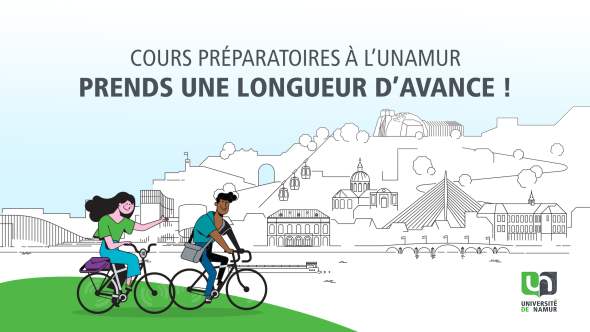
A program for every discipline
During late August and early September, UNamur offers rheto students preparatory courses tailored to their future training.
These revision sessions are specially designed to support students in their transition to university. By reinforcing their foundations in the key subjects of their future discipline, they enable them to approach their first year with confidence.
These preparatory courses are also an excellent opportunity to discover the campus, meet future classmates and familiarize themselves with the learning methods specific to higher education.
Preparation for the medical entrance exam
For students wishing to begin studying medicine, two sessions are also organized according to a specific timetable to prepare for the entrance exam.
Academic year 2025-2026
Something for everyone
09:30 | Welcome ceremony for new students
11:00 | Back-to-school celebration at Saint-Aubain Cathedral (Place Saint-Aubain - 5000 Namur), followed by student welcome by the Cercles.
Official ceremony for the start of the academic year 2025-2026
Save the date!



